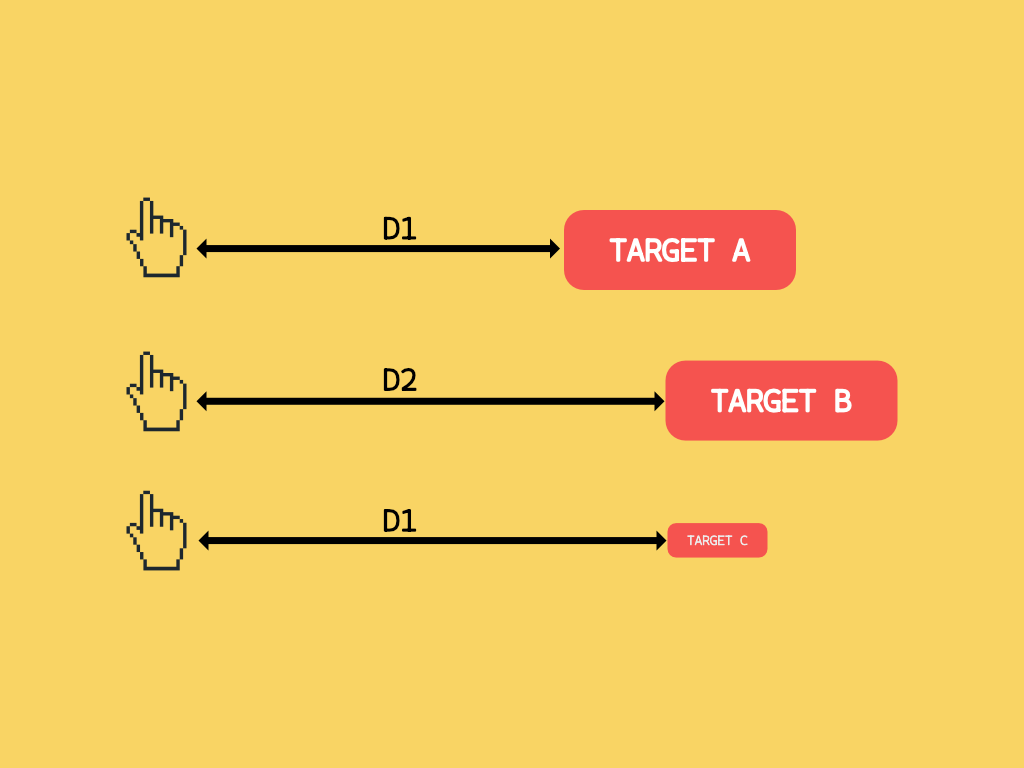
Paul Fitts was doing research in 1954 on human motion when he discovered that “…the time required to move to a target depends on the distance to it, yet relates inversely to its size (Interaction Design Foundation., 2023, October 20).” That means that as something gets smaller (farther away), it gets harder to get to (difficulty increases) and as something gets bigger (closer) it gets easier to get to (difficulty decreases). Today we call the equation that represents this discovery Fritts’s Law.
This matters to UI design because today Fritts’s Law is used to describes the amount of time it takes a user to move a pointer (their mouse or other input device) to a target (link, button, menu item, etc.). It’s important because it describes the challenge of trying to click on something on a page. If something is too small it can not only be difficult to click on, but it can take a long time to click on it. So if you’re designing a website, you want to be sure your buttons are large enough to be easily clicked on and your fonts are big enough to not only be readable but also easily clickable.
Fitts’ Reciprocal Clicking Task Results (Cornell.edu., n.d.):
Error: 1
MT = 281.442 + 142.541log(A/W + 1)
RSquare = 0.881
Mean MT
| A | W | MT | ID |
| 512 | 64 | 786 | 3 |
| 128 | 32 | 631 | 2 |
| 512 | 32 | 771 | 4 |
| 256 | 64 | 654 | 2 |
| 128 | 16 | 765 | 3 |
| 256 | 16 | 922 | 4 |
| 512 | 16 | 976 | 5 |
| 256 | 32 | 730 | 3 |
| 128 | 64 | 426 | 2 |
A = Target distance
W = Target width
MT = Movement time
ID = Index of DifficultyI had never done the Fitts’ Reciprocal Clicking Task before today and was also unfamiliar with Fritts’s Law before this weeks assignment. However, what I can deduce from the data above is that it looks like as the difficulty increased the time it took to click on the target increased. These results are inline with what Fritts’s Law would predict, as the target got smaller (more difficult) the time it took me to click on it increased.
The research that Paul Fritts was doing on human motion in 1954 is still very much relevant today. His discovery that the amount of time it takes to reach a target is very much inversely related to its size. These results can and should be applied to modern UI design to help reduce the time it takes to move a pointer across the screen to find a button or link and to make those buttons or links of a size that is easy to target.
———
References:
Cornell.edu. (n.d.). Fitts’ Reciprocal Clicking Task. Fitts’ Law Experiment. http://ergo.human.cornell.edu/FittsLaw/FittsLaw.html
Interaction Design Foundation. (2023, October 20). What is Fitts’ law? The Interaction Design Foundation. https://www.interaction-design.org/literature/topics/fitts-law
